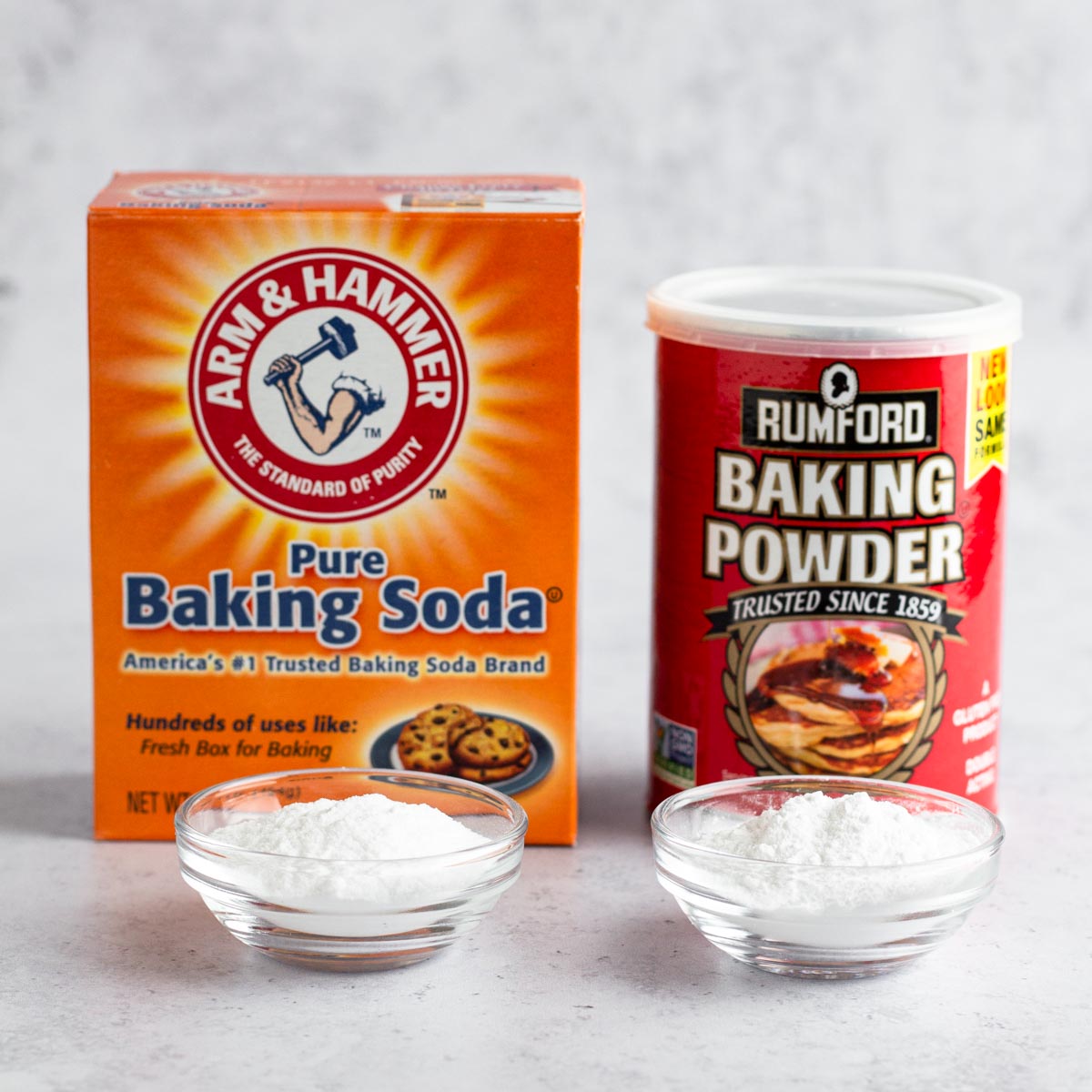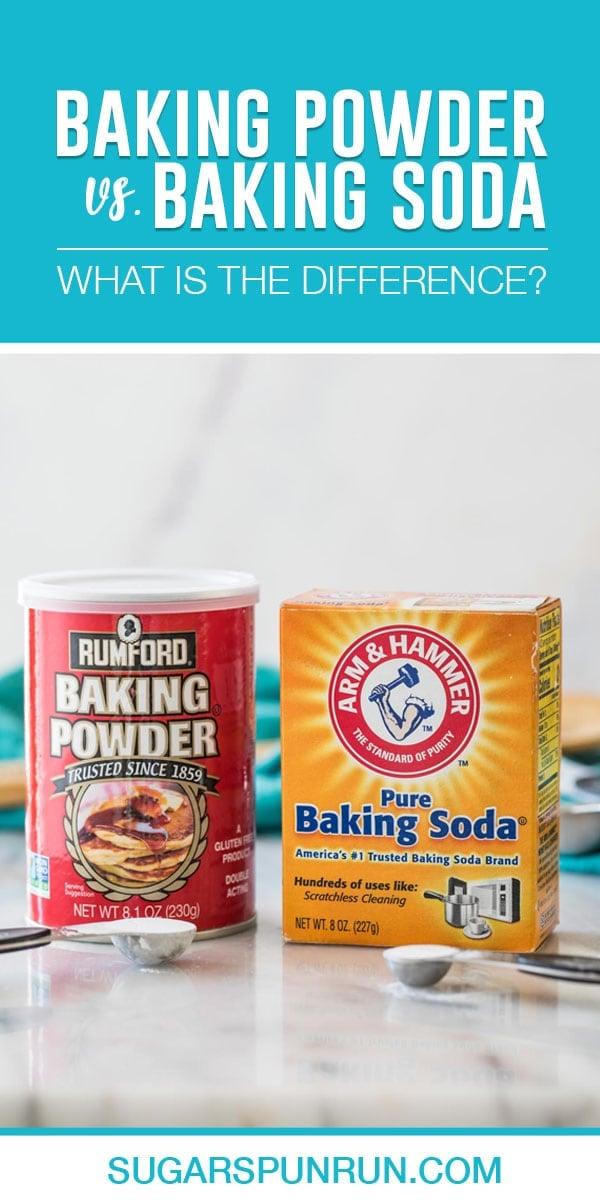Have you ever wondered why your cakes rise like magic, or why your cookies stay soft and chewy for days? Well, my friend, the answer lies in the mystical world of baking essentials – specifically, the enchanting powers of baking soda and baking powder. These tiny but mighty ingredients are the unsung heroes of the kitchen, working their alchemical wonders to turn mere mixtures of flour, sugar, and eggs into delectable treats fit for a king. So grab your apron and a pinch of curiosity as we delve into the delicious science behind these culinary superstars. Get ready to mix, measure, and maybe even make a little mess – because with a little understanding of baking soda and baking powder, you’ll be whipping up confectionery creations that would make even the most seasoned bakers green with envy. It’s time to unlock the secrets of the baking universe – one delicious experiment at a time!
Testing the Purity of Baking Soda and Baking Powder
So you’ve got a box of baking soda and baking powder sitting in your pantry, but how do you know if they’re still good to use? Fear not, for we are here to guide you through the rigorous process of testing the purity of these beloved baking essentials.
First things first, you need to gather your supplies. Here’s what you’ll need:
- A small bowl
- Vinegar
- A spoon
- A keen sense of smell
Let’s start with the baking soda. Pour a small amount into the bowl and add a splash of vinegar. If it fizzes and bubbles like a science experiment gone wrong, congratulations! Your baking soda is still pure and potent. If not, well, at least you got to witness a mini volcanic eruption in your kitchen.
Next up, the baking powder. Again, pour some into the bowl and add vinegar. If it produces a lively fizz, you’re good to go. If it remains disappointingly flat, looks like it’s time to bid farewell to that trusty old box of baking powder.

The Reaction Mechanisms Behind Baking Soda and Baking Powder
When it comes to baking soda and baking powder, the reactions behind these kitchen essentials are no joke. Let’s break it down in a way that even the most scientifically challenged baker can understand.
So, picture this: you’re whipping up a batch of fluffy pancakes and you decide to add a little baking soda to the mix. What happens next is pure magic - well, not really, but it’s still cool. The baking soda reacts with the acidic ingredients in your batter, like buttermilk or vinegar, to release carbon dioxide gas. This gas is what gives your pancakes that airy, light texture we all know and love.
Now, let’s talk about baking powder. This handy ingredient is basically a two-for-one deal - it contains both baking soda and a dry acid, like cream of tartar. When you add liquid to the mix, these two components react to create carbon dioxide gas. That’s right, folks, your baked goods are literally expanding before your eyes!
So there you have it, the not-so-secret reactions behind baking soda and baking powder. The next time you’re in the kitchen whipping up a batch of cookies or muffins, just remember – it’s all about the science behind the bake!

acids-in-activating-baking-soda-and-baking-powder”>The Role of Acids in Activating Baking Soda and Baking Powder
Have you ever wondered how baking soda and baking powder magically make your baked goods rise and become fluffy? Well, the secret lies in their relationship with acids! Yes, acids – the unsung heroes of the baking world. Let’s dive into the wonderful world of chemistry in the kitchen!
When baking soda or baking powder comes into contact with an acid, a magical reaction occurs. The acid works its charm by breaking down the carbonate in the baking soda or baking powder, releasing carbon dioxide gas. This gas is what creates those lovely bubbles in your batter, making it light and airy.
Acids come in many forms in the kitchen, from citrus fruits like lemons and oranges to dairy products like yogurt and buttermilk. These acids not only add flavor to your baked goods but also play a crucial role in activating the baking soda or baking powder. It’s like having a secret weapon in your pantry!
So, the next time you’re baking up a storm in the kitchen, remember to thank the acids for their hard work in helping your cakes, muffins, and cookies rise to delicious perfection. And who knows, maybe you’ll even find a newfound appreciation for those tangy ingredients that make all the difference in your favorite treats!
temperature-on-baking-soda-and-baking-powder”>The Impact of Temperature on Baking Soda and Baking Powder
Who knew that something as simple as temperature could have such a big impact on our beloved baking soda and baking powder? Well, hold onto your aprons, folks, because we’re about to dive into the science behind it all!
When it comes to baking soda, the key is activation. This magical powder needs a bit of heat to do its thing and work its leavening magic in our baked goods. So, make sure your oven is preheated and ready to go before you start mixing up that batter. Otherwise, you might end up with a flat and sad loaf of bread. And nobody wants that, right?
Now, onto baking powder. This little powerhouse contains both an acid and a base, which react with each other when introduced to moisture and heat. So, if you’re planning on letting your cake batter sit around for too long before popping it in the oven, you might not get that nice rise you were hoping for. Remember, timing is everything in the world of baking!
So, next time you’re in the kitchen getting ready to whip up some treats, keep in mind the impact of temperature on your baking soda and baking powder. Your taste buds will thank you, and your baked goods will be all the better for it. Happy baking!

Understanding the Differences Between Single-Acting and Double-Acting Baking Powder
Have you ever wondered what makes your baked goods rise to the occasion (literally)? Well, let’s talk about baking powder! There are two main types – single-acting and double-acting – and as it turns out, they’re not so similar after all!
Single-Acting Baking Powder:
- This type of baking powder reacts as soon as it gets wet, so you have to work quickly to get those muffins or cakes in the oven ASAP!
- It’s like the overeager friend who always jumps the gun – it just can’t wait to start the reaction and make your batter rise.
- Think of single-acting baking powder as the sprinter of the baking powder world – it’s fast, efficient, and gets the job done in no time!
Double-Acting Baking Powder:
- Unlike its single-acting counterpart, double-acting baking powder has a two-step reaction. First, it reacts when it’s mixed with liquid, and then again when it’s exposed to heat in the oven.
- It’s like the careful planner who takes their time to ensure everything goes smoothly. Double-acting baking powder knows that good things come to those who wait!
- So, if you want your baked goods to rise to perfection with a little extra oomph, double-acting baking powder is the way to go.
storage-for-baking-soda-and-baking-powder”>The Importance of Proper Storage for Baking Soda and Baking Powder
Have you ever gone to bake a delicious batch of cookies, only to find that your baking soda or baking powder has gone clumpy and lost its magic touch? It’s a tragic tale as old as time, but fear not! With proper storage, you can ensure that your trusty leavening agents stay fresh and ready to rock your world of baking.
First and foremost, make sure to keep your baking soda and baking powder in a cool, dry place. We’re talking prime real estate here – forget the pantry, these babies deserve a spot in the VIP section of your kitchen. Say no to moisture and watch those clumps disappear like magic. Airtight containers are your best friend in this game.
Secondly, don’t overlook the power of labeling your storage containers. Let’s be real, who hasn’t accidentally mistaken baking soda for baking powder in a pinch? Save yourself the headache and boldly label those containers like a boss. Your future self will thank you.
Lastly, don’t be afraid to give your baking soda and baking powder the occasional sniff test. If they’re smelling off, it’s time to bid them adieu and buy a fresh batch. Your baked goods deserve only the finest ingredients, so don’t settle for anything less. Remember, a happy kitchen is a well-stocked and properly stored kitchen!
FAQs
What is the difference between baking soda and baking powder?
Think of baking soda as the single guy who needs a wingman to get the job done – that’s where baking powder comes in! Baking soda is just sodium bicarbonate, which needs an acid (like lemon juice or vinegar) to activate its magical leavening powers. Baking powder, on the other hand, is a mix of baking soda, an acid, and a bit of cornstarch for good measure. It’s like a ready-to-go leavening dream team!
How does baking soda and baking powder work in baking?
When you pop that glorious cake batter into the oven, the heat causes the leavening agents in baking soda or baking powder to release carbon dioxide gas. This gas gets trapped in the batter, creating those lovely air pockets that make your baked goods rise and become light and fluffy. It’s like a science experiment in your kitchen, but way more delicious!
Can I substitute baking soda for baking powder, or vice versa?
While both baking soda and baking powder are leavening agents, they have different purposes in baking. Baking powder already contains an acid, so it’s best for recipes that don’t have acidic ingredients. On the other hand, baking soda needs an acid to activate, so it’s perfect for recipes with naturally acidic ingredients like buttermilk or yogurt. You can try substituting one for the other in a pinch, but it might affect the taste and texture of your final baked goods.
How can I test if my baking soda or baking powder is still good?
To test if your baking soda is still good, simply drop a bit into a cup of vinegar. If it fizzes and bubbles like a mini science experiment, you’re good to go! For baking powder, mix a bit with hot water – if it bubbles up, it’s ready to leaven. If not, time to toss it out and get a fresh batch for your baking adventures!
Any tips for using baking soda and baking powder in baking?
Remember, a little goes a long way when it comes to baking soda and baking powder. Too much of either can leave your baked goods tasting like a science project gone wrong. Make sure to measure accurately and follow the recipe guidelines to achieve that perfect rise and delicious flavor in your baked creations!
—
Time to Bake Like a Pro!
Congratulations, you’ve now cracked the secret code to baking success by understanding the chemistry behind baking soda and baking powder! Armed with this knowledge, you’re ready to confidently tackle any recipe that comes your way. So go ahead, preheat that oven, dust off your baking tools, and unleash your inner pastry chef. Remember, baking is a science, but that doesn’t mean you can’t have some fun along the way. Happy baking!






